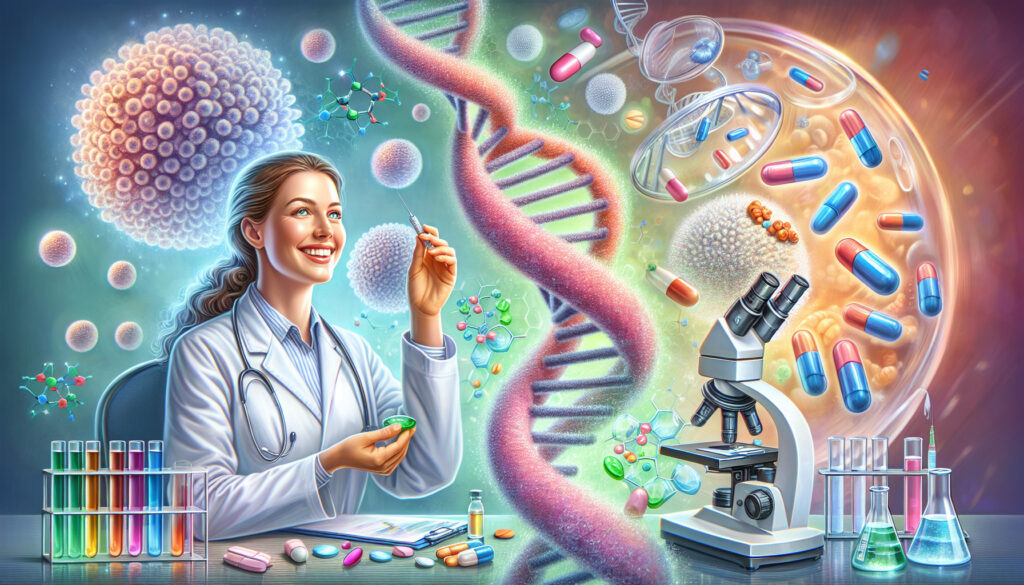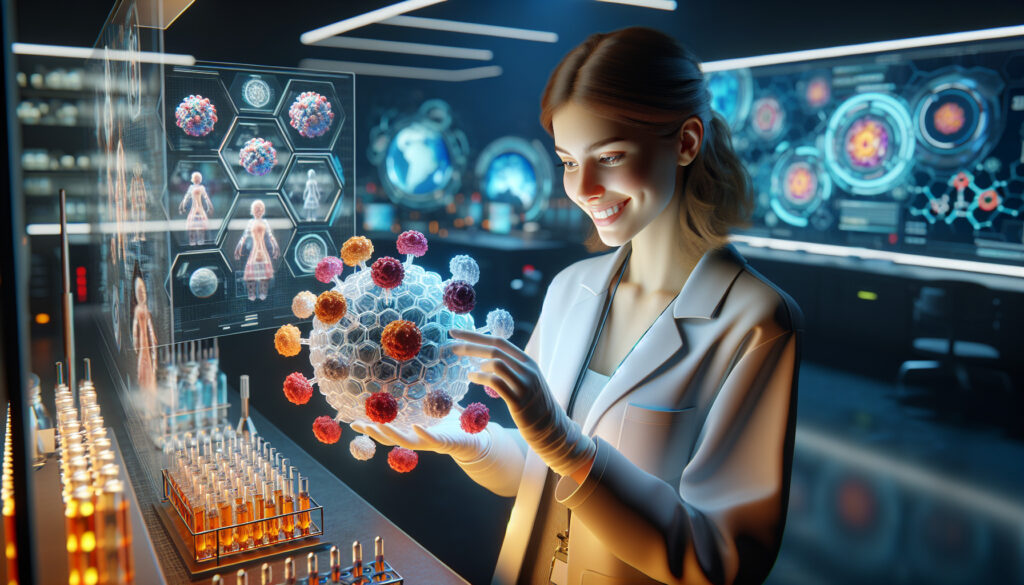
Ever wondered how vaccines go from a scientist’s idea to a life-saving shot in your arm? 💉 The journey of vaccine development is a fascinating blend of cutting-edge science, rigorous testing, and careful regulation. You might think it’s a straightforward process, but the path from research to approval is filled with challenges, triumphs, and countless hours of dedication.
Imagine being part of a team that could potentially save millions of lives. That’s the reality for scientists working on vaccine development. But it’s not all lab coats and microscopes – the process is a complex dance of innovation, safety checks, and regulatory hurdles. Are you ready to peek behind the curtain and discover what it really takes to bring a vaccine to the public? 🔬🧪
In this blog post, we’ll take you on a journey through the entire vaccine development process. From the initial spark of an idea in the research phase to the final stamp of approval, we’ll explore each step along the way. You’ll learn about the intricate development process, the crucial role of clinical trials, and the stringent regulatory reviews that ensure vaccines are safe and effective. We’ll also delve into the challenges that researchers face in this high-stakes field. So, let’s roll up our sleeves and dive into the world of vaccine development!

The Vaccine Research Phase
As you delve into the world of vaccine development, it’s crucial to understand that the journey begins with a meticulous research phase. This foundational stage sets the course for all subsequent steps in creating a safe and effective vaccine. Let’s explore the key components of this critical phase.
A. Identifying the Target Pathogen
The first step in vaccine research is pinpointing the specific pathogen you want to protect against. This process involves:
- Studying the pathogen’s structure
- Analyzing its genetic makeup
- Understanding its mechanisms of infection
- Identifying potential weaknesses to exploit
Researchers use advanced techniques like genomic sequencing and electron microscopy to gather this vital information. By thoroughly understanding the target pathogen, you can develop a more effective vaccine strategy.
| Aspect | Importance |
|---|---|
| Structure | Helps identify potential vaccine targets |
| Genetic makeup | Guides the selection of antigens |
| Infection mechanisms | Informs vaccine design strategy |
| Weaknesses | Provides opportunities for vaccine intervention |
B. Preclinical Studies in Laboratory
Once you’ve identified the target pathogen, the next step is to conduct preclinical studies. These laboratory-based experiments are crucial for:
- Testing potential vaccine candidates
- Assessing safety and efficacy in cell cultures
- Evaluating immune responses in animal models
- Determining optimal dosage and administration routes
During this phase, you’ll use various research tools and techniques, such as:
- In vitro assays
- Animal studies
- Immunological tests
- Toxicology assessments
These preclinical studies help you gather essential data on your vaccine’s potential effectiveness and safety profile before moving to human trials.
C. Designing the Vaccine Concept
With the insights gained from identifying the pathogen and conducting preclinical studies, you can now focus on designing the vaccine concept. This stage involves:
- Selecting the most promising vaccine platform (e.g., live attenuated, inactivated, subunit, or genetic vaccines)
- Choosing appropriate antigens to stimulate immune response
- Developing formulation and delivery methods
- Considering manufacturing feasibility and scalability
Your vaccine design should aim to:
- Elicit a strong and lasting immune response
- Be safe for administration to a wide population
- Remain stable during storage and transport
- Be cost-effective to produce at scale
By carefully considering these factors, you lay the groundwork for a vaccine that has the potential to make a significant impact on public health.
As you progress through the vaccine research phase, keep in mind that this is just the beginning of a long and complex journey. The knowledge and data you gather here will be crucial as you move forward into the development process, where your vaccine concept will be refined and prepared for clinical trials.

Vaccine Development Process
Now that we’ve explored the initial research phase, let’s delve into the intricate process of vaccine development. This stage is crucial in transforming promising research into a viable product that can protect millions.
A. Packaging and storage considerations
When developing a vaccine, packaging and storage are paramount to maintaining its efficacy. You need to consider:
- Temperature requirements
- Light sensitivity
- Shelf life
- Container materials
Here’s a quick overview of common vaccine storage requirements:
| Vaccine Type | Temperature Range | Light Sensitivity | Typical Shelf Life |
|---|---|---|---|
| Live attenuated | 2°C to 8°C | High | 12-18 months |
| Inactivated | 2°C to 8°C | Low | 2-3 years |
| mRNA | -80°C to -60°C | Moderate | 6-12 months |
B. Scaling up production
As you move from laboratory-scale to industrial production, scaling up becomes a significant challenge. You’ll need to:
- Optimize bioprocessing techniques
- Invest in large-scale equipment
- Ensure consistent quality across batches
- Develop efficient purification methods
C. Quality control measures
Maintaining stringent quality control is non-negotiable in vaccine development. You must implement:
- Rigorous testing protocols
- Contamination prevention strategies
- Batch-to-batch consistency checks
- Stability monitoring throughout the production process
D. Formulation and manufacturing
The final step in the development process involves formulating the vaccine for maximum effectiveness and manufacturability. You’ll need to consider:
- Adjuvant selection to enhance immune response
- Stabilizers to prolong shelf life
- Preservatives for multi-dose vials
- Delivery mechanisms (e.g., syringes, nasal sprays)
Manufacturing must adhere to Good Manufacturing Practices (GMP) to ensure consistent quality and safety. You’ll work closely with regulatory bodies to validate your manufacturing process.
As you progress through these stages, remember that each decision impacts the vaccine’s safety, efficacy, and accessibility. The choices you make in packaging, scaling, quality control, and formulation will significantly influence the success of clinical trials and ultimately, the vaccine’s approval.
Next, we’ll explore the critical phase of clinical trials, where your carefully developed vaccine will be put to the test in human subjects.

Clinical Trials: Testing Safety and Efficacy
Now that you’ve learned about the vaccine development process, let’s dive into the critical phase of clinical trials. This stage is where the safety and efficacy of a potential vaccine are rigorously tested.
Phase I: Initial Safety Tests
Your journey through clinical trials begins with Phase I. In this stage, you’ll see researchers focus on the vaccine’s safety profile. They’ll administer the vaccine to a small group of healthy volunteers, typically 20-100 people. During this phase, you’ll observe scientists closely monitoring:
- Side effects
- Immune response
- Optimal dosage
This initial testing helps determine if the vaccine is safe enough to proceed to the next phase.
Phase II: Expanded Safety and Immunogenicity Studies
As you move to Phase II, you’ll notice the trial expanding to include hundreds of participants. This phase aims to:
- Further evaluate safety
- Assess the vaccine’s ability to provoke an immune response (immunogenicity)
- Determine the most effective dosage and schedule
You’ll find that researchers often include individuals from diverse age groups and health backgrounds in this phase to get a more comprehensive understanding of the vaccine’s effects.
Phase III: Large-scale Efficacy Trials
Phase III is where you’ll see the most extensive testing. This phase involves:
- Thousands to tens of thousands of participants
- Randomized, double-blind studies
- Comparison with placebo or existing vaccines
Here’s a breakdown of what you can expect in a typical Phase III trial:
| Aspect | Description |
|---|---|
| Participants | 3,000 – 50,000+ |
| Duration | Several months to years |
| Primary Focus | Vaccine efficacy and safety |
| Data Collected | Infection rates, severe disease prevention, side effects |
During this phase, you’ll see researchers analyzing whether the vaccine effectively prevents the targeted disease in real-world conditions.
Phase IV: Post-approval Monitoring
Once a vaccine receives approval, you enter the final phase of clinical trials. Phase IV involves:
- Continuous monitoring of the vaccine’s safety
- Tracking rare side effects
- Assessing long-term effectiveness
- Evaluating performance in diverse populations
You’ll find that this ongoing surveillance is crucial for maintaining public trust and ensuring the vaccine’s safety and efficacy over time.
As you progress through these phases, you’ll notice that each step builds upon the previous one, creating a comprehensive picture of the vaccine’s safety and effectiveness. This rigorous process helps ensure that when a vaccine reaches the public, it has undergone thorough testing and scrutiny.

Regulatory Review and Approval
Now that we’ve explored the clinical trials phase, let’s delve into the critical process of regulatory review and approval for vaccines. This stage is crucial in ensuring that only safe and effective vaccines reach the public.
A. Granting of approval for public use
The journey from laboratory to public use is a rigorous one. Regulatory bodies, such as the Food and Drug Administration (FDA) in the United States, meticulously review all data before granting approval. This process involves:
- Thorough examination of clinical trial results
- Assessment of manufacturing processes
- Evaluation of proposed labeling and packaging
- Review of post-marketing surveillance plans
B. Addressing safety concerns
Safety is paramount in vaccine development. Regulatory bodies prioritize addressing potential safety concerns before granting approval. This involves:
- Analyzing adverse event reports from clinical trials
- Assessing the vaccine’s risk-benefit profile
- Evaluating potential long-term effects
- Ensuring proper storage and handling protocols are in place
C. Rigorous evaluation by experts
The approval process relies heavily on expert evaluation. Panels of independent scientists, medical professionals, and public health experts meticulously review the data. This collaborative approach ensures:
- Unbiased assessment of vaccine efficacy and safety
- Identification of potential risks or concerns
- Recommendations for additional studies if needed
- Transparent decision-making process
D. Submission of data to regulatory bodies
Vaccine developers must submit comprehensive data packages to regulatory bodies. This submission includes:
| Data Category | Description |
|---|---|
| Clinical Trial Results | Detailed outcomes from all phases of clinical trials |
| Manufacturing Information | Processes, quality control measures, and facilities details |
| Pharmacovigilance Plans | Strategies for ongoing safety monitoring post-approval |
| Labeling and Packaging | Proposed product information and packaging designs |
The regulatory body thoroughly reviews this data, often requesting additional information or clarification. This process can take several months to ensure no stone is left unturned in the quest for a safe and effective vaccine.
As you can see, the regulatory review and approval process is a critical safeguard in vaccine development. It ensures that only thoroughly tested and vetted vaccines make it to the public, maintaining the delicate balance between urgency and safety. With this robust system in place, you can feel confident in the vaccines that receive approval for public use.
Next, we’ll explore the various challenges that researchers and developers face throughout the vaccine development process, shedding light on why creating a new vaccine is such a complex and time-consuming endeavor.

Challenges in Vaccine Development
As you’ve learned about the intricate process of vaccine development, it’s crucial to understand the obstacles that researchers and manufacturers face. Let’s explore the key challenges in vaccine development that impact the global health landscape.
A. Global collaboration and equitable distribution
Global collaboration is essential for successful vaccine development, but it comes with its own set of challenges. You’ll find that coordinating efforts across countries, research institutions, and pharmaceutical companies can be complex. Here’s a breakdown of the main issues:
- Language barriers and cultural differences
- Varying regulatory standards across countries
- Intellectual property rights and data sharing
- Equitable distribution of vaccines once developed
To address these challenges, you need to support initiatives that promote international cooperation and transparent communication.
B. Public perception and vaccine hesitancy
One of the most significant hurdles you’ll encounter in vaccine development is overcoming public skepticism. Vaccine hesitancy can significantly impact the success of immunization programs. Consider these factors:
- Misinformation and conspiracy theories
- Historical mistrust in medical institutions
- Lack of understanding about vaccine safety and efficacy
- Cultural and religious beliefs
To combat vaccine hesitancy, you must focus on clear, transparent communication and community engagement strategies.
C. Evolving pathogens and new strains
As you work on developing vaccines, you’ll face the constant challenge of adapting to evolving pathogens. New strains and mutations can render existing vaccines less effective or even obsolete. Here’s a table illustrating this challenge:
| Pathogen | Challenge | Impact on Vaccine Development |
|---|---|---|
| Influenza | Rapid mutation | Annual vaccine updates required |
| HIV | High genetic variability | Difficulty in targeting conserved regions |
| COVID-19 | Emerging variants | Need for booster shots or modified vaccines |
To address this challenge, you must invest in continuous research and surveillance to stay ahead of pathogen evolution.
D. Funding and resource allocation
Adequate funding and resource allocation are critical for successful vaccine development. You’ll find that securing long-term financial support can be challenging, especially for diseases that primarily affect low-income countries. Consider these funding-related issues:
- Limited profit potential for certain vaccines
- Competition for resources among different health priorities
- Fluctuating political support and public interest
- High costs associated with research, clinical trials, and manufacturing
To overcome these challenges, you need to explore innovative funding models and public-private partnerships.
E. Time constraints and pressure
In times of public health crises, you’ll face immense pressure to develop vaccines quickly. However, rushing the process can compromise safety and efficacy. Here are some time-related challenges you’ll encounter:
- Balancing speed with thorough safety testing
- Recruiting and retaining participants for clinical trials
- Scaling up manufacturing capacity in a short timeframe
- Navigating expedited regulatory processes without cutting corners
To address these challenges, you must focus on streamlining processes while maintaining rigorous scientific standards.
As you move forward in understanding vaccine development, remember that overcoming these challenges requires a multifaceted approach. By addressing issues of global collaboration, public perception, pathogen evolution, funding, and time constraints, you can contribute to more effective and efficient vaccine development processes.

Vaccines play a crucial role in protecting public health, and understanding their development process can help you appreciate the rigorous steps taken to ensure their safety and efficacy. From initial research to final approval, each stage of vaccine development is carefully designed to create a product that can effectively combat infectious diseases.
As you’ve learned, vaccine development is a complex and time-consuming process that involves extensive research, multiple clinical trials, and strict regulatory oversight. By staying informed about these processes, you can make more educated decisions about your health and contribute to important discussions about public health policies. Remember, your understanding and support of vaccine development can help create a healthier future for everyone.
